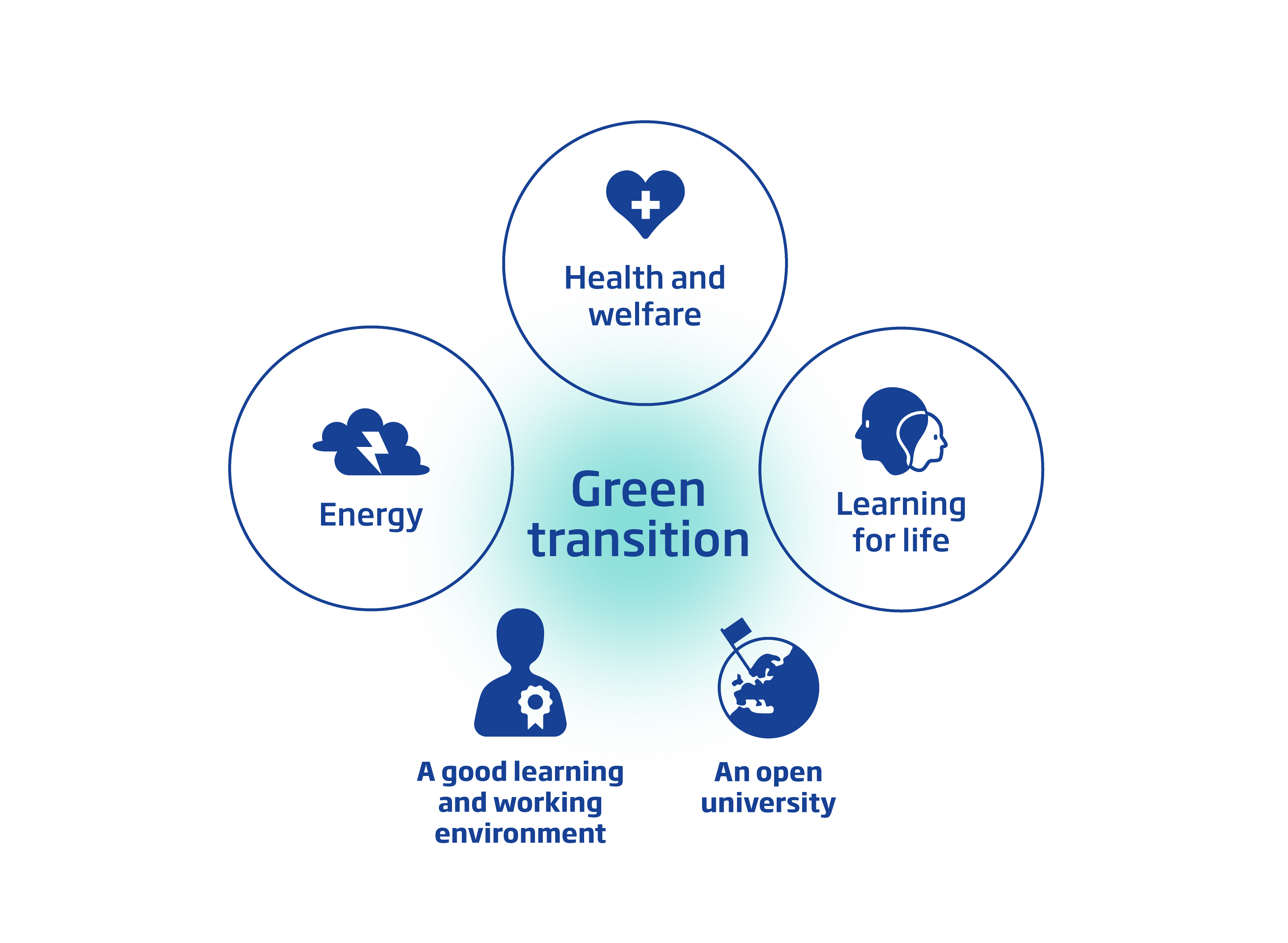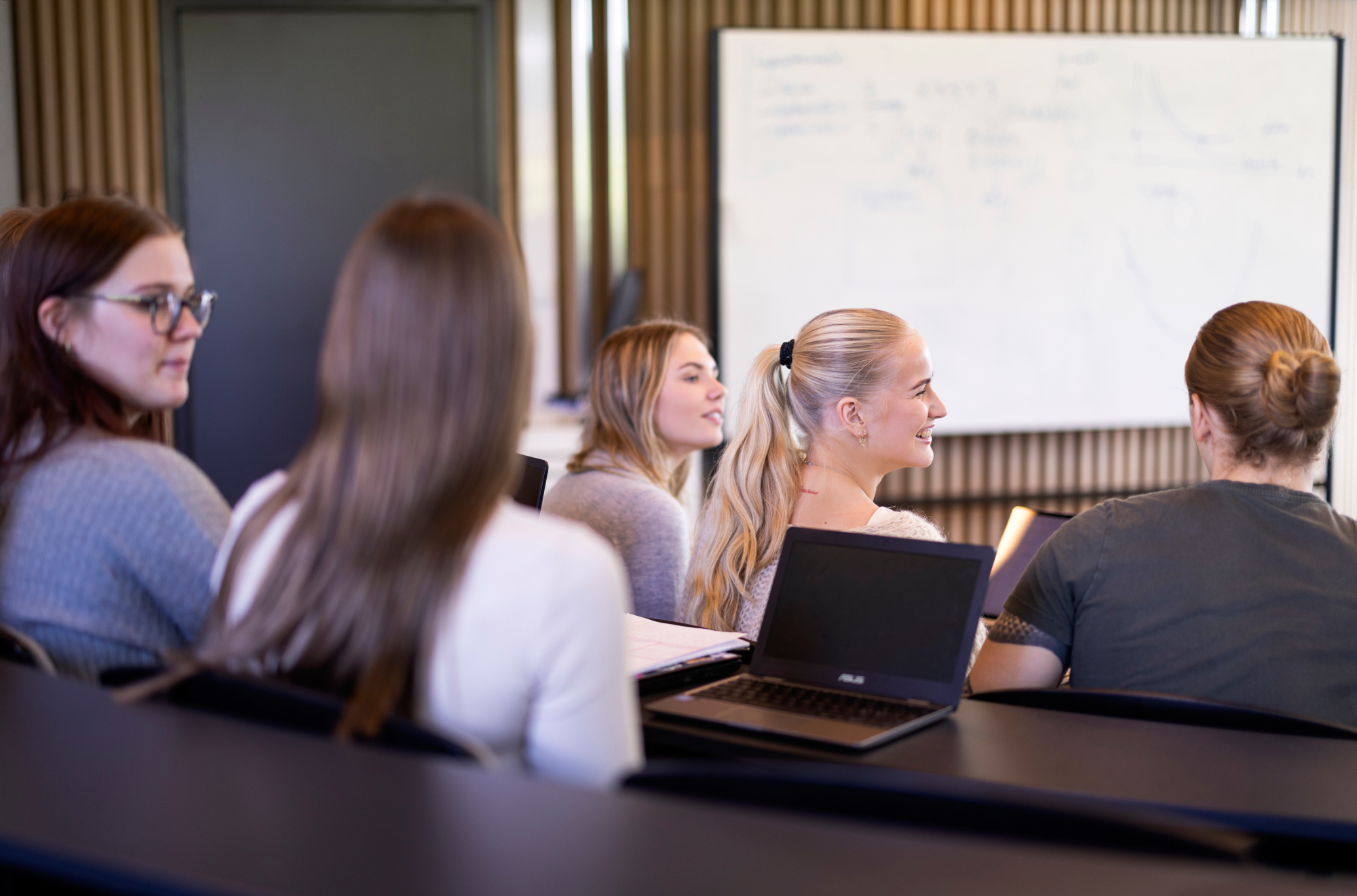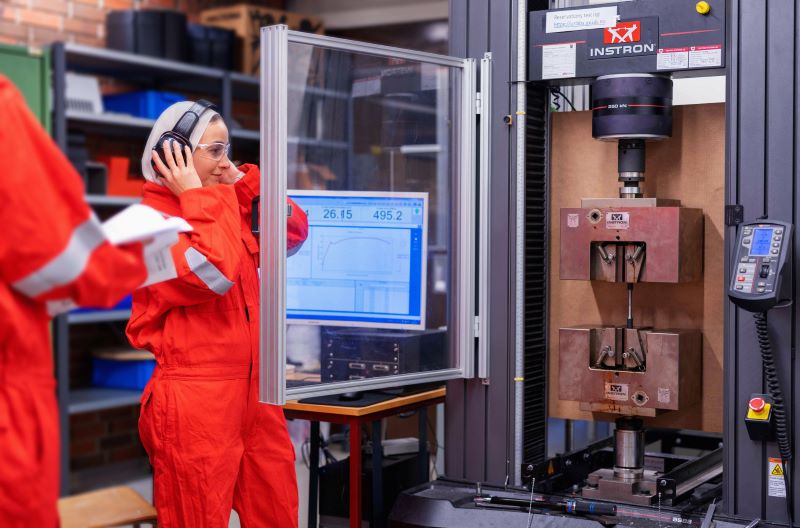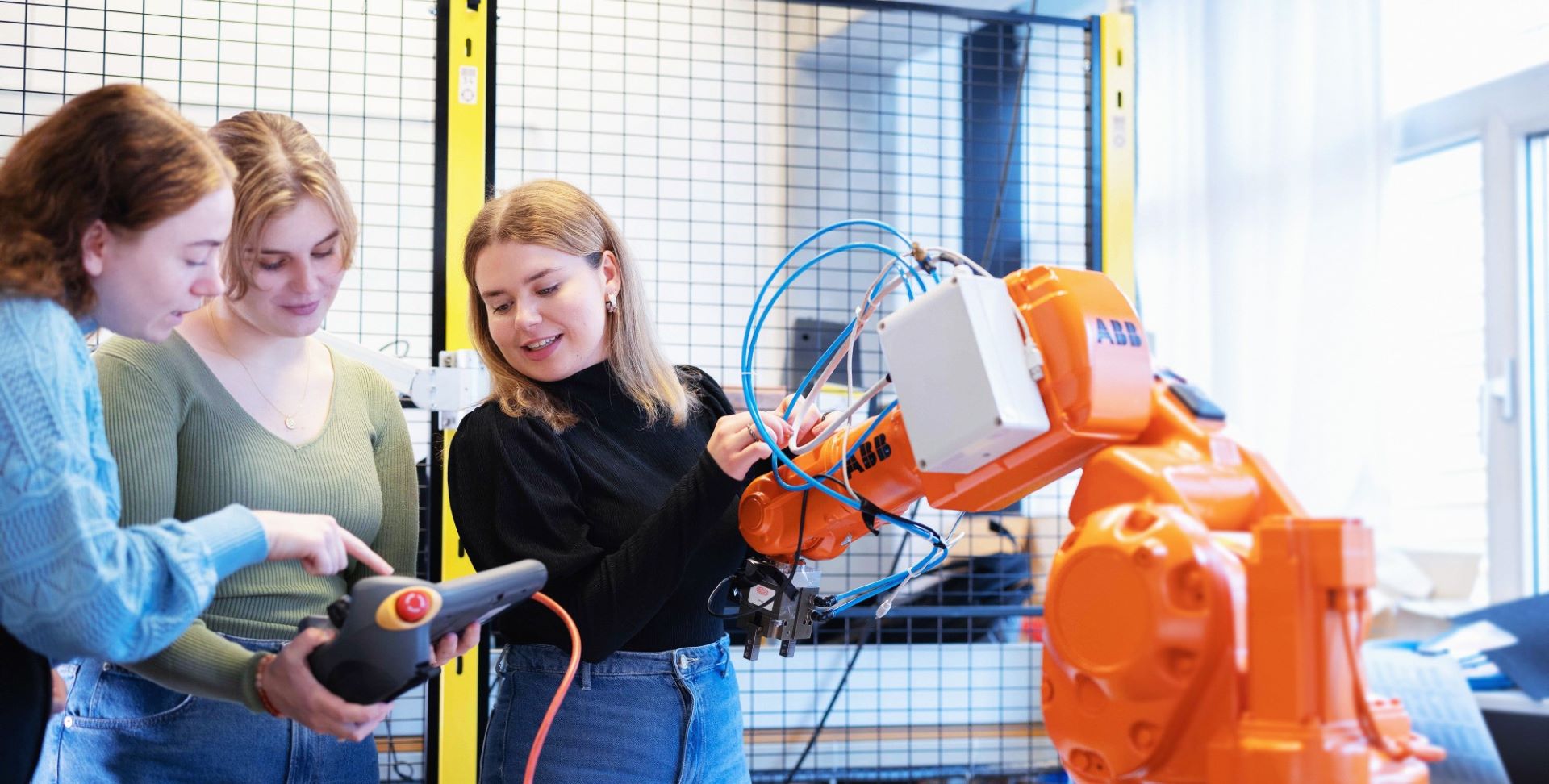Our strategy is named Driving Force 2030. Driving Force 2030 describes our vision, values, objectives, and strategic initiatives.
Driving Force 2030 is a revised version of Strategy 2030, and applies from June 2024 untill 2030.

We will be an open and innovative university that promotes high quality in all parts of the organisation.
Our societal mission is higher education, research, academic and artistic development work, dissemination and innovation.
We will contribute to sustainable development in terms of economy, the environment and social conditions.
We have a common direction that will be characterised by responsibility for the green transition. We will create a high level of well-being among students and staff.
Energy, health and welfare, and learning for life are our academic areas of priority.

Vision and values
Vision
The University of Stavanger will have an innovative, international profile and be a driving force behind knowledge development and societal change processes.
Our motto:
We will challenge the well-known and explore the unknown
Values
Our core values will govern our interaction with students, each other, and society. They will help us steer towards the achievement of our vision and our objectives as a university. The University of Stavanger is:

Independent
Students and staff will continuously interact with society and be a driving force behind the independent, critical quest for new knowledge.
As an institution built on democratic and humanistic values, we uphold academic freedom and independent research, and promote ideals such as freedom of expression, integrity, and equality.
Through critical reflection and clear communication, staff and students will put important issues on the agenda and actively participate in the academic and social debate.

Involving
We value transparency and will involve students and society in the academic community. We share our knowledge and expertise and break down barriers between different academic communities and the world around us. Involving means our decisions rest on a wider platform of knowledge.
Respect for each other’s differences and backgrounds promotes social and academic participation. Universal design will characterise our programmes of study, as well as the physical and digital learning environment. Diversity is valued as a resource in our working and learning environments.

Creative
We will push forward the boundaries of knowledge and skills. Creativity and innovative activity will define our scientific, artistic, and administrative activities.
We will promote the application of new knowledge and encourage wise decisions within the organisation, in society, and in working life. We will promote quality of life, good living conditions and sustainable development.
Our programmes of study will be formative journeys that develop the individual’s ability to think critically and make reflective life choices. We will be a culture bearer and a cultural explorer.
Profile: an innovative university
Challenging, exploring, and developing society makes us relevant and recognisable. Staff and students collaborate closely with the wider community in an internationally oriented and innovative region. We have a regional, national, and global perspective throughout our academic activities, and our staff and students are internationally oriented.
The University of Stavanger will prioritise student-active and innovative learning, high-quality teaching and activities relating to innovation and entrepreneurship. We will offer future-oriented education and critical, independent research of a high international standard, in which ideas are transformed into value creation for individuals and society.

Strategic objectives
Through strategic goals and thematic initiatives, the University of Stavanger will contribute to national objectives for the higher education sector.
We will work to achieve our goals through priorities that strengthen the entire university: education, research and artistic development, innovation and collaboration, organisation, and infrastructure. Our state framework funding will be allocated in a way that facilitates goal attainment.
All employees at the university have a responsibility to ensure that the goals are achieved. Managers are specifically responsible. Good leadership is a prerequisite for us to succeed with our strategic initiatives.
The University of Stavanger will be a driving force behind the development of knowledge and change processes in society.
| Initiative | Objective |
|---|---|
| Green transition | Green transition characterises the development of our organisation. |
| Energy | UiS creates innovative solutions for the energy systems of the future. |
| Health and welfare | UiS invests broadly in knowledge that can develop innovative health and welfare services. |
| Learning for life | UiS promotes learning and formation for life through new educational approaches, targeting research-based knowledge for kindergartens, schools and working life. |
| An open university | UiS promotes transparency. |
| A good learning and working environment | UiS has a good environment that contributes to well-being, diversity, recruitment, and accomplishments. |
Strategic priorities towards 2030
We will further develop the organisation, staff and academic profile through prioritised initiatives that reflect the university’s advantages, national strategies, and the needs of society.

The strategic priorities will be followed up through action plans for the institution as a whole and for individual units and supported through the allocation of strategic funding.
Our educational programmes will be attractive, flexible, and relevant to working life. We will strengthen the university’s economic sustainability through clear priorities, renewal, and effective resource utilisation in all parts of the organisation.
Our areas of priority express our academic profile and focus and set the direction for our contributions to sustainable social development, welfare and innovation, safety, and emergency preparedness.
We expect high quality, clear benefits for society, extensive interdisciplinary interaction, and collaboration with the world around us – regionally, nationally, and internationally.

Management parameters
Green transition
- Prioritise research areas that contribute to green transition
- Grants from targeted societal missions in Horizon Europe
- Student-active and innovative learning with clear contributions to the SDGs
- Develop competence that supports green and digital transition
- Green campus (reduced carbon footprint from our own activities)
Energy
- Restructuring energy research and education
- High quality increases funding from external competition arenas
- Strengthen publishing related to sustainable energy solutions
Health and welfare
- Outstanding educational programmes in health and welfare
- High quality increases funding from external competition arenas
- Strengthen publishing related to health and welfare
Learning for life
- Develop partnerships for better quality in kindergartens and schools
- High quality increases funding from external competition arenas
- Strengthen publishing related to learning and learning environments
An open university
- Development of more research projects that involve co-creation
- Increased use of digital opportunities for co-creation, collaboration, and involvement
- Increased digital accessibility to educational programmes
- More programmes of study that offer professional training in working life
A good learning and working environment
- Increased diversity and commitment among students
- Involvement of more students in research
- Educational quality that safeguards various aspects of formation
- Systematic work to develop staff competence, leadership and employeeship
- A working environment that promotes diversity, commitment, trust, well-being, and co-determination